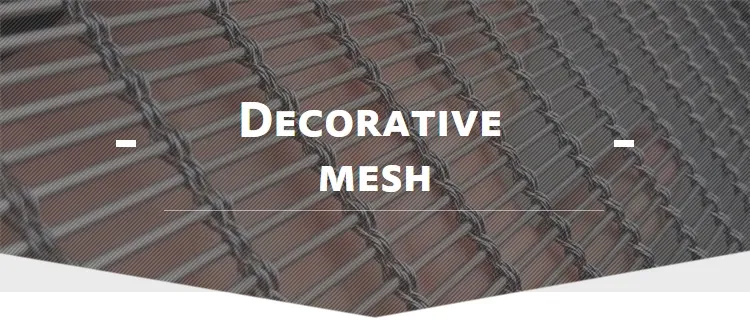Feb . 16, 2025 09:27 Back to list
how to use decorative mesh


Indoors, decorative mesh serves as an elegant partition, allowing for distinct spaces without complete separation. Attractive and customizable, mesh partitions can define dining areas, office spaces, or living zones, maintaining an open and airy feel. Beyond partitioning, mesh adds texture to furniture, lighting fixtures, and even as ornamental wall art, echoing a modern aesthetic. Practical Crafting Tips For DIY enthusiasts, working with decorative mesh is a rewarding experience, but approach with precision and creativity. Measure twice before cutting, ensuring edges are smoothed to prevent injury or fabric damage. Use appropriate tools—shears for mesh, gloves to protect hands, and pliers for manipulation. A simple yet stunning project involves crafting mesh wall panels as a creative bulletin board. Utilizing magnetic or clip systems allows for easy alteration of displays, maintaining both functionality and style. When creating craft items or home decor, layering mesh with other textures or colors can produce multidimensional visuals, enhancing designs with minimal effort. Safety and Maintenance Safety is paramount when handling metal meshes, particularly in high traffic or child-accessible areas. Ensure edges are well-secured and consider capping or covering any exposed ends. Maintaining decorative mesh involves regular cleaning and inspection. Metal meshes require a gentle wipe-down with mild soap and water to prevent build-up of dirt or grime, while fabric or plastic meshes benefit from dusting or light vacuuming. Regular maintenance not only preserves appearance but also extends longevity. In conclusion, the versatility of decorative mesh makes it an invaluable asset in design and construction. Its unique ability to blend aesthetic and function can revolutionize spaces, making them both beautiful and efficient. By selecting the appropriate type and carefully installing it, anyone can leverage decorative mesh to notable effect, underscoring its role as a medium of endless creativity and style.
Latest News
-
Premium Anti-Climb Fence Spikes for Sale
NewsAug.01,2025
-
Premium Peach Post Fence | Durable & Stylish Security
NewsJul.31,2025
-
Best Galvanized Grating Price - Durable Galvanized Steel Grating Solutions
NewsJul.30,2025
-
0.5-4.0mm Wire 2×2 4×4 8×8 Hot Dipped Galvanized Welded Mesh Roll
NewsJul.30,2025
-
Metal Fence Pickets for Sale – Durable Galvanized & Steel Options
NewsJul.29,2025
-
Competitive Galvanized Grating Price for Durable Flooring Solutions
NewsJul.29,2025
Our company owns has excellent CAD steel grating drawing designers, who can provide customers with perfect steel grating layout design and better meet customers' special requirements for products. We have been adhering to it the business tenet of "quality first, customer first", with high-quality products, reasonable prices, and the fastest delivery time, we wholeheartedly provide customers with a full range of services! Welcome new and old customers to cooperate sincerely and create brilliance together!
Contact Us
WELCOME TO OUR COMPANY!
Thank you for your interest in our services! If you have any questions or wousld like to book a service, please don’t hesitate to contact us. Our team is dedicated to providing you with the highest level of service and support, and we are committed to working with you to make your event a success.

Service Email

Service Phone
Product Center
Contact Us
- Phone: +86 +86 15733154345
- E-mail: sales@chengsenchina.com
- Address: B1213 GLOBAL CENTER, NO.226 ZHONGHUA NORTH STREET, SHIJIAHUANG, CHINA


























